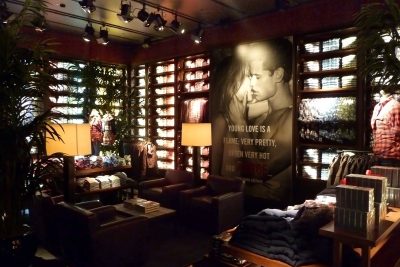Author’s Note: Quick Bites is a series of write-ups on various marketing concepts. I decided to come up with this series to help people understand these concepts better through a few easy to read posts. Any comments or suggestions for the next topic are welcome. Cheers!
Sensory branding has taken the front seat in the marketing world. Brands are upgrading themselves and finding ways to attract consumers by forging their emotional association. Sensory marketing helps to seduce the customer to influence their feelings and create positive brand attitudes. It is a very personal way to market a product and helps them to experience the brand in a way to satisfy their hedonic desires. According to studies, 70% of customers believe that emotions account for 50% of their purchasing decision.
Examples of brands utilizing this to their advantage are:
1. Abercrombie and Fitch
The stores are designed to leverage the Olfactory, Visual and Aural senses of the customer. The stores smell strong of their fragrance range (Fierce No. 8) which helps attract customers to the stores. In their visuals, they utilize halo-effect through the use of models wherever possible. The stores are also designed to highlight only the clothes while the rest of the store is dark. The music is chosen to give a nightclub feel to the store, thus keeping with the young and cool image of the brand.

2. Apple
The brand utilizes sensory marketing through touch senses the feel of the products in their stores. Also, the visual senses are targeted through careful, delicate designs of the products. The sensory marketing is not just limited to the product but is extended to the stores itself, which are designed to facilitate the visual and aural emotional build-up of the customers.

3. Singapore Airlines
They have targeted the olfactory senses. They introduced the aroma called Stefan Floridian Waters, that is very unique, and blended in attendant’s perfume, towel services etc. This evokes a feeling of comfort and luxury for the fliers. It enhances their experience and makes the travel relaxing.
4. Coke
Coke uses sensory marketing in its adverts when it utilized the fizzy visuals and the sound of the fizz in all the communication. Each advertisement comprises of these sensory elements that help create a feeling of nostalgia and craving amongst its consumer base.
You can check out other 'Quick Bites' write-ups through the following links:
---------
About the Author:

Priyanka is a second-year MBA student at Indian Institute of Management, Lucknow and is a member of InsideIIM’s second student team. She is also a part of PRiSM, The Marketing Cell at IIM Lucknow.
